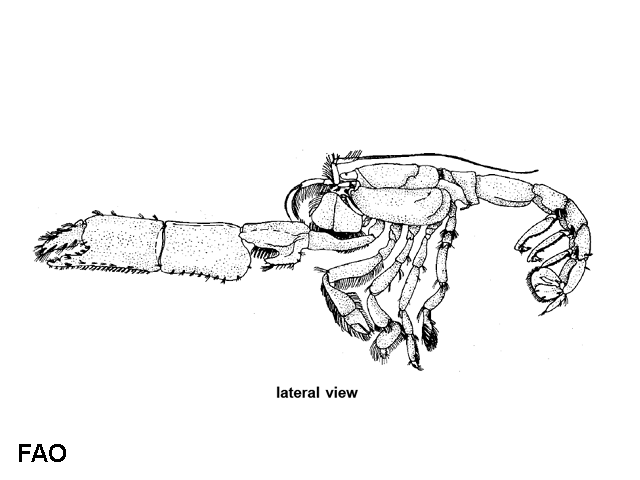| Callianassidae (ghost shrimp) |
|
|
benthic; brackish; marine |
| Northwest Pacific. |
|
Rostrum very inconspicuous, a wide angle in the anterior margin of the carapace, overreaches the full length of the eyes. The eyes bluntly triangular or quadrangular. Antennal angle likewise inconspicuously triangular, without antennal spine. Antennular peduncle distinctly longer than the antennal peduncle, reaching beyond it with more than half the last segment. Third maxilliped with the ischium and merus expanded to form distinct operculum. Large chela of adult male with a small concavity in the anterior margin of the palm above the fixed finger. Carpus somewhat longer than the palm and longer than high. Merus with a distinct process in the basal half of the lower margin; this process produced forward, ending in a narrowing rounded top. In the females this process reduced to a small triangular tooth. Telson quadrangular slightly shorter than the uropods. The endopod of the uropod broadly triangular with rounded corners (Ref. 4). |
| It has total body lengths of 1.5 to 5 cm (males), 1 to 5 cm (females) and 2.8 to 5 cm (ovigerous females) (Ref. 4). Habitat: Sand or mud flats of coasts that are more exposed. Behavior: it makes burrows in the soft substrate (Ref. 4). |
|
Not Evaluated (N.E.) Ref. 123251)
|
|
|
Source and more info: www.sealifebase.org. For personal, classroom, and other internal use only. Not for publication.

